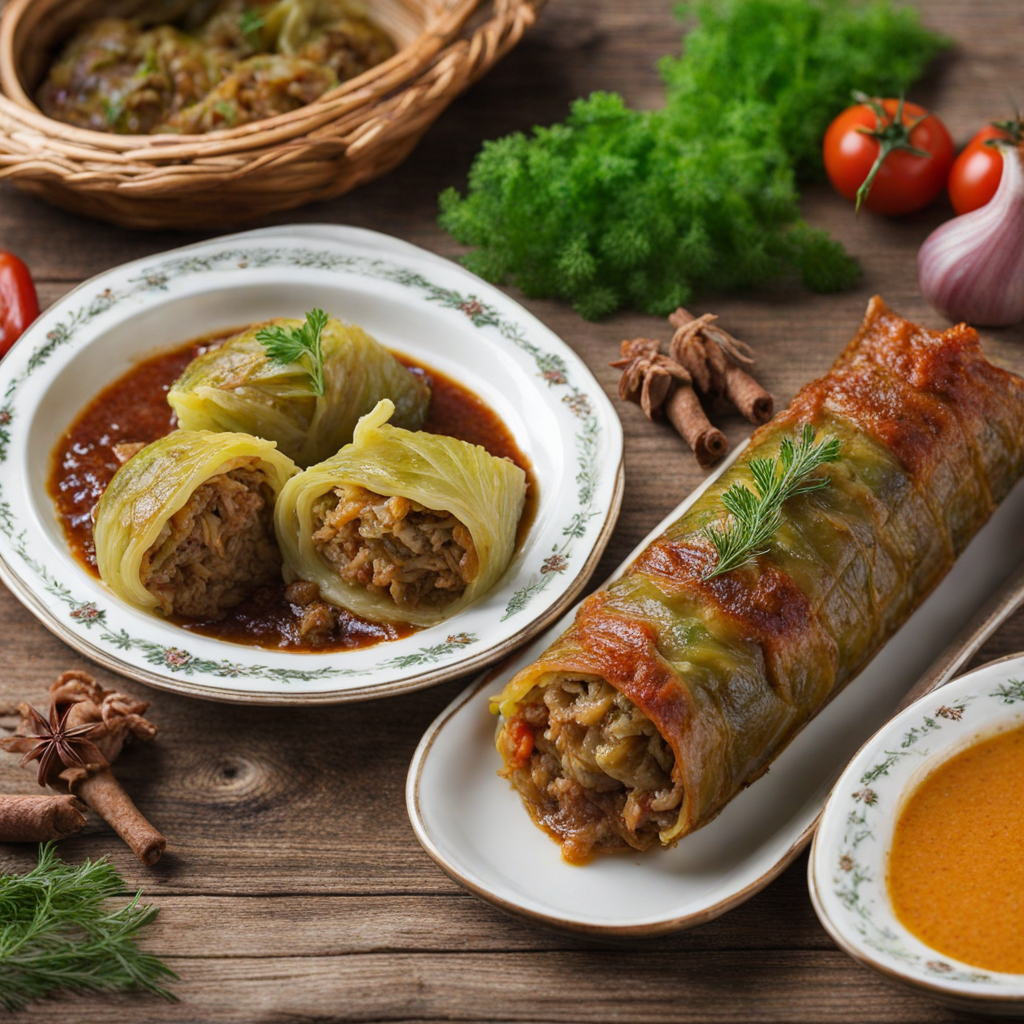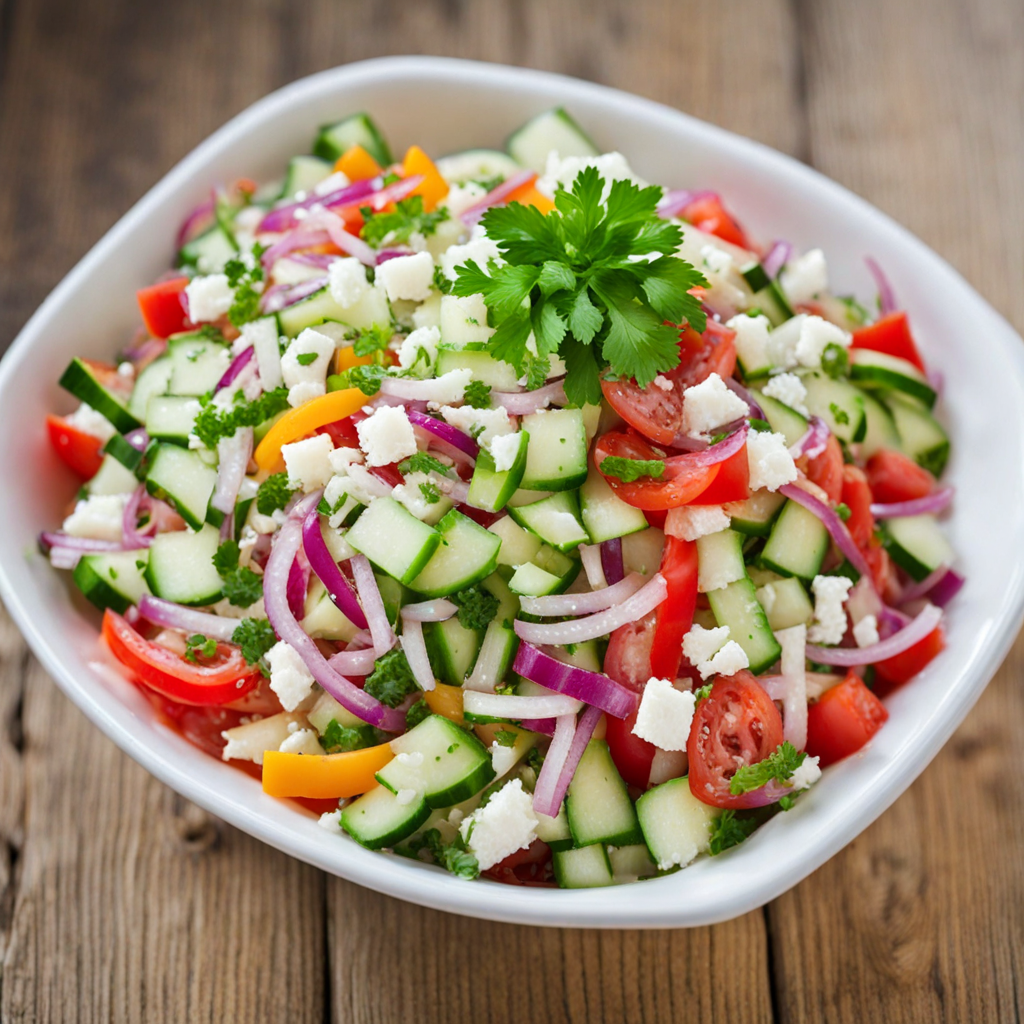Tikvenik
Tikvenik is a traditional Bulgarian pastry that showcases the delightful flavors of pumpkin. This dish consists of thin layers of phyllo dough that are generously filled with a mixture of grated pumpkin, sugar, and spices, often enhanced with walnuts and cinnamon. The sweet and earthy notes of the pumpkin meld beautifully with the buttery, crispy texture of the phyllo, creating a harmonious balance of flavors and textures that is both comforting and satisfying. Each bite reveals a warm, aromatic filling that is distinctly seasonal and reminiscent of autumn harvests. The preparation of Tikvenik is an art in itself, as the thin phyllo sheets require careful handling to prevent tearing. The filling is typically sweetened to taste, making it a delightful dessert or a sweet snack. Some variations may include ingredients like raisins or a drizzle of honey, adding further complexity to its flavor profile. As it bakes, the pastry turns golden brown, and the combination of the flaky crust with the soft, spiced filling creates an irresistible aroma that fills the kitchen. Served warm or at room temperature, Tikvenik is often enjoyed with a dollop of yogurt or a scoop of ice cream, which contrasts beautifully with its sweetness. This dish not only highlights the natural sweetness of pumpkin but also reflects the rich culinary heritage of Bulgaria. Whether you are enjoying it for breakfast, as a snack, or dessert, Tikvenik offers a delicious and unique taste experience that is sure to leave a lasting impression on your palate.
How It Became This Dish
The Enchanting History of Тиквеник: A Bulgarian Culinary Treasure #### Origins of Тиквеник Тиквеник, a traditional Bulgarian pastry, has its roots deeply embedded in the agricultural practices and culinary traditions of the Balkan region. The name "тиквеник" derives from "тиква," which means "pumpkin" in Bulgarian. This delightful dish is essentially a sweet or savory pastry filled with grated pumpkin, sugar, and walnuts, nested between layers of delicate phyllo dough. The history of тиквеник can be traced back to ancient times when the pumpkin was first cultivated in the Americas and subsequently introduced to Europe by explorers and traders. By the time it reached the Balkans, the pumpkin had already become an integral part of local agriculture due to its adaptability to the soil and climate. In Bulgaria, pumpkins began to be harvested in late summer and early autumn, coinciding with the harvest season, making them a staple in the rural diet. #### Cultural Significance Тиквеник is more than just a dish; it embodies the spirit of Bulgarian culture and community. Traditionally prepared during the autumn months, it often graces the tables of families during Harvest Festivals and other significant celebrations. Its preparation is a communal activity, usually involving family members coming together to share recipes and techniques passed down through generations. The act of making тиквеник reflects the strong sense of togetherness and the importance of family in Bulgarian culture. In the context of Bulgarian Orthodox Christianity, тиквеник also holds particular significance during the fasting periods, especially in the lead-up to Christmas. During these times, many people refrain from consuming animal products; thus, тиквеник serves as a delicious alternative that satisfies both the palate and the spirit of the fasting tradition. The use of pumpkin, a symbol of fertility and abundance, further enhances its importance, as it represents the bounty of the earth during these reflective times. #### Development Over Time Over the centuries, тиквеник has undergone various transformations, both in its ingredients and in the methods of preparation. In its early days, the filling was quite simple, often consisting of just grated pumpkin mixed with sugar or honey. As trade routes expanded and cultural exchanges flourished, additional ingredients such as nuts, raisins, and cinnamon were introduced, enriching the flavor profile of this beloved pastry. The traditional preparation of тиквеник involves layering multiple sheets of phyllo dough, which are typically brushed with melted butter or oil, creating a flaky and delicate texture. The fillings vary widely, with some families opting for a sweeter version, adding sugar, cinnamon, and nuts, while others prefer a savory take, incorporating cheese or herbs. This adaptability has allowed тиквеник to remain a beloved dish across generations, catering to diverse tastes and dietary preferences. In modern times, the popularity of тиквеник has surged beyond Bulgaria’s borders, with Bulgarian expatriates and food enthusiasts around the world seeking to recreate the flavors of their homeland. As global culinary trends continue to evolve, тиквеник has also found its place in contemporary cuisine, often being featured in fusion dishes or adapted to suit modern dietary needs, such as gluten-free or vegan versions. #### Тиквеник Today Today, тиквеник is celebrated not just in homes but also in restaurants and cafes across Bulgaria. It is a staple of festive occasions, including Christmas, New Year’s, and family gatherings, where it is often served alongside other traditional dishes like banitsa, a cheese-filled pastry. The visual appeal of тиквеник, with its golden-brown crust and enticing aroma, makes it a welcome addition to any table. In recent years, there has been a resurgence of interest in traditional Bulgarian cuisine, with chefs and food historians working to preserve and promote dishes like тиквеник. Culinary festivals and workshops are organized to educate younger generations about the importance of these traditional recipes, ensuring that they are not lost to time. Moreover, social media has played a significant role in this revival, as food lovers share their own interpretations of тиквеник, showcasing its versatility through various platforms. This has led to innovative takes on the classic dish, with new flavor combinations and presentation styles that appeal to a broader audience. #### Conclusion Тиквеник is a true reflection of Bulgarian culture, history, and community. From its humble origins as a simple pumpkin pastry to its modern-day adaptations, it has retained its significance as a symbol of togetherness and celebration. As the world continues to embrace culinary diversity, тиквеник stands as a testament to the rich agricultural heritage and vibrant traditions of Bulgaria. The journey of тиквеник is a celebration of the land's bounty, the bond of family, and the joy of sharing food. Whether enjoyed in its traditional form or reimagined with contemporary flair, тиквеник remains a cherished dish that connects generations and invites all who partake in its flavors to experience the warmth of Bulgarian hospitality. As we savor each bite, we partake in a history that is as rich as the flavors themselves, reminding us of the importance of food as a bridge between cultures and a vessel for cherished memories.
You may like
Discover local flavors from Bulgaria







